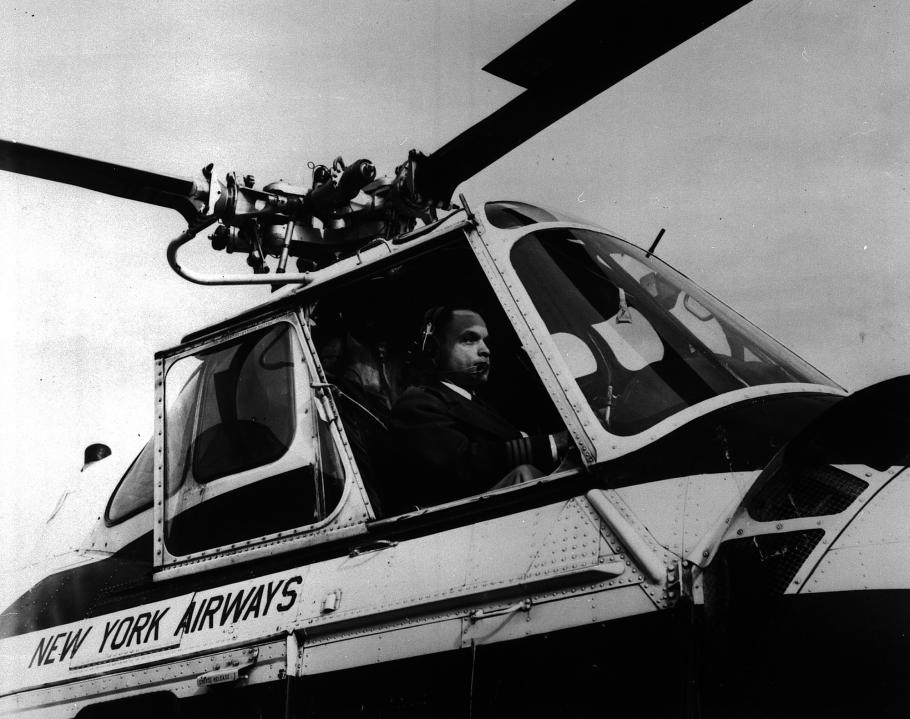A result of a racist system is that you could be skilled in a field and qualified for a job yet be overlooked simply for being black, and Perry Young Jr, an airplane and helicopter pilot found out the hard way when he could not get a pilot’s job.
Eventually Young Jr. became the first African-American person to be hired by a commercial airline with regularly scheduled passenger flights.
Young’s family moved to Oberlin, Ohio in 1929. Right after graduating from Oberlin High School in 1937, Young took his first flight on an airplane and decided he would become a pilot. Later that summer, Young started his flight lessons and flew his first plane on Christmas Day 1937.
He paid for the lessons by washing cars over the summer. The next year, Young decided to attend Oberlin College instead of accepting a four-year scholarship to the prestigious Oberlin Conservatory of Music. In 1939, he received his private pilot’s license at 20 after dropping out of college to pursue this goal full time.
But America’s harsh treatment of its black citizens meant for three years (1939-1942), Young was denied a job as a commercial pilot because of racial discrimination in the industry.
However, with World War II on the horizon, the U.S. government founded the Civilian Pilot Training Program, partly to increase the number of capable aviators in the country. Through this program, Young became an instructor at the Coffey School of Aeronautics in Chicago in 1940.
When the Japanese attacked Pearl Harbor in December of 1941, the military hired Young to teach pilots of the newly formed 99th Pursuit Squadron. These aviators, African-American as well, became known as the Tuskegee Airmen.
Young trained more than 150 men and was praised for his expert training which resulted in the Tuskegee Airmen becoming often decorated pilots. Many of his students went on to serve with distinction in Europe. Although he wanted to serve, Young was not allowed. The instructors were considered too valuable to potentially lose in combat and were forbidden to join deploying units.
Young worked for the Army through the rest of World War II. After the war ended he still could not get a position as a commercial pilot.
In 1946 Young left the U.S. to find pilot’s work in the Caribbean. His first stop was Haiti where he flew for the national airline and tried unsuccessfully to start his own airline business. While in Haiti, Young met and married Shakeh with whom he had three children over the next decade.
After his failed airline venture in Haiti and a brief stint as a pilot in the U.S. Virgin Islands, Young moved his family to Puerto Rico in 1953 and worked as a pilot for the Puerto Rico Water Resources Authority till 1955. While he was living in Puerto Rico, he earned his helicopter pilot’s license.
Finally at the age of 37, Perry Young was hired by New York Airways, a regional carrier, in 1956 as both an airline and helicopter pilot. On February 5, 1957, Young flew his first commercial flight when he co-piloted a nine-minute, 12-passenger helicopter flight from La Guardia Airport to Idlewild Airport. Young reached the rank of captain after a month at New York Airways and by that point flew both helicopters and commercial passenger airliners.
Young remained with New York Airways for 23 years until the company went bankrupt in 1979. At the age of 60 Young began piloting for a Manhattan sightseeing service but retired after a few years.

Over the years he had amassed over 7,000 hours of flight time, 200 of which had been in helicopters.
Young Jr. died on November 8, 1998, in Middletown, New York, leaving behind his second wife, and his two remaining children.
He was born to his parents Henry Young Sr. and Edith Lucille Young on March 12, 1919 in Orangeburg, South Carolina. His father ran a dry cleaning store and also owned several garages.
Across a nation unwilling to hire black pilots, regardless of their experience or qualifications, Civil Rights organizations contributed to Young’s success. The Urban League of Greater New York and the State Commission against Discrimination had pushed for many regional airlines to change their discriminatory practices and hire African American pilots. At the time, some newspapers hailed Young’s achievement as a breakthrough.
For Young himself, he submitted: “Flying is my whole life. I love it.”
Young’s exploits inspired others to follow. African Americans would continue to break into the industry. From the late 1950s into the 1960s, men and women would slowly gain wider access to jobs as flight attendants and airline pilots across the US.










